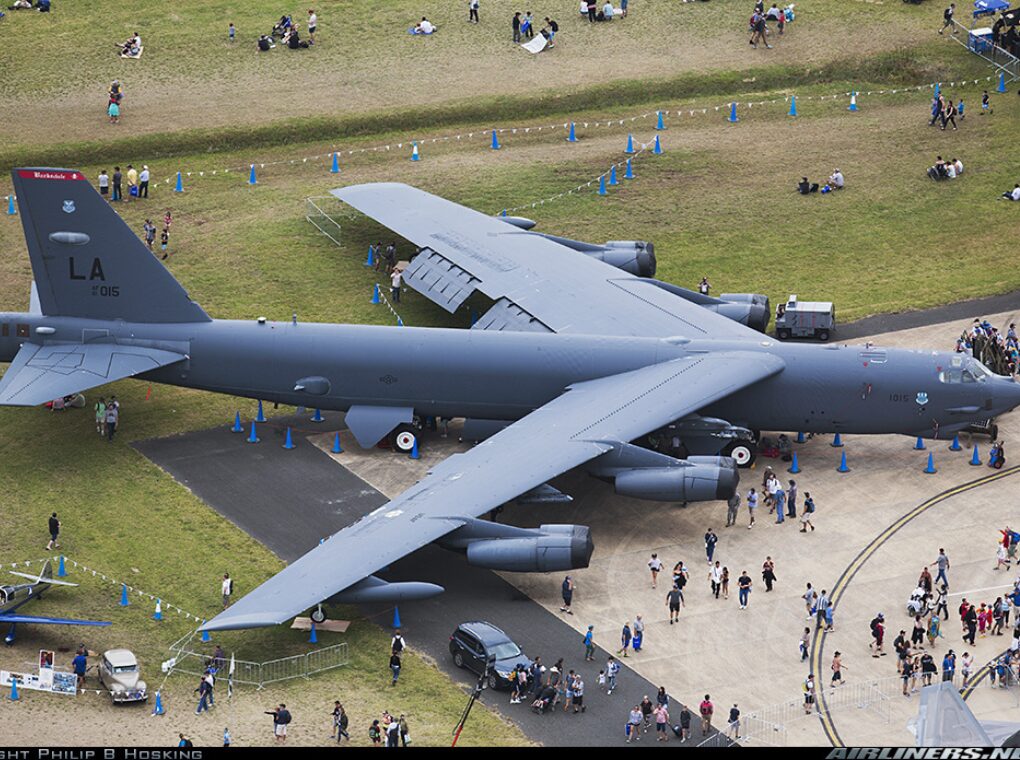On September 20, 2025, a U.S. Air Force B-52H Stratofortress strategic bomber, accompanied by supporting fighter aircraft, made a prominent appearance in the skies above the Czech Republic as part of the Czech Air Force Day celebrations.
This high-profile flyover, observed just minutes ago, underscores the United States’ ongoing commitment to NATO’s eastern flank amid heightened tensions with Russia. The formation’s eastward trajectory has sparked speculation about a deliberate message aimed at Moscow, signaling NATO’s resolve and readiness in the region.
Strategic Context and Timing
The B-52’s appearance comes at a time of increased geopolitical friction, with Russia’s ongoing aggression in Ukraine and its frequent military maneuvers near NATO borders raising concerns among alliance members. The Czech Republic, a key NATO ally in Central Europe, has been a focal point for allied operations, including joint training missions and deployments aimed at bolstering regional security.
The flyover, integrated into Czech Air Force Day, serves as both a ceremonial gesture and a strategic show of force, highlighting NATO’s unity and deterrence capabilities.
The B-52H Stratofortress, a long-range heavy bomber capable of carrying both conventional and nuclear weapons, is a cornerstone of U.S. strategic power. Its deployment to Europe, often based at RAF Fairford in the United Kingdom, is part of the U.S. Air Force’s Bomber Task Force (BTF) missions.
These missions aim to enhance interoperability with NATO allies, demonstrate rapid deployment capabilities, and deter potential adversaries. The eastward flight path of the B-52 formation suggests it may continue toward other NATO eastern flank nations, such as Poland, Romania, or the Baltic states, where similar displays have been used to reassure allies and signal strength to Russia.
Czech Air Force Day and NATO Cooperation
Czech Air Force Day, an annual event celebrating the nation’s air forces, provided the backdrop for this significant flyover. The event typically features aerial demonstrations, public displays, and opportunities to showcase military cooperation with allied nations.
The inclusion of a U.S. B-52, escorted by fighter jets likely from the Czech Air Force and other NATO partners, emphasizes the strong bilateral ties between the United States and the Czech Republic. Previous BTF missions in the region, such as a notable B-52 stopover in Ostrava, Czech Republic, in February 2022, have focused on practicing quick-turn sortie generation and theater familiarization, further deepening operational coordination.
The Czech Air Force, equipped with modern aircraft like the JAS-39 Gripen, has a history of close collaboration with the U.S. military, including joint exercises and partnerships with the Texas and Nebraska National Guard. General Aleš Opata, Chief of the General Staff of the Czech Army, previously highlighted the value of such cooperation, noting, “We exchange experiences… and work together in foreign operations, organize exercises, and cooperate on the education system.”
Russia’s Response and Regional Implications
While no official Russian response to this specific flyover has been reported at the time of writing, Moscow has historically reacted to NATO’s B-52 deployments near its borders with heightened alertness.
For instance, in July 2024, Russia scrambled MiG-29 and MiG-31 fighter jets to intercept two B-52H bombers over the Barents Sea, claiming the U.S. aircraft approached Russian airspace. Such incidents underscore the delicate balance of deterrence and escalation in the region, with NATO maintaining that its operations occur in international airspace and are designed to ensure collective defense.
The B-52’s flight over the Czech Republic, heading east, could be interpreted as a direct response to recent Russian actions, such as increased military activity near NATO’s borders or provocative statements from Russian officials.
People have speculated that this maneuver may be linked to recent events, including a reported Russian strike near Poland, though no official confirmation ties the flyover to a specific incident. The U.S. Air Force has emphasized that BTF missions are planned to provide “strategic predictability and assurance for allies” while introducing “operational unpredictability for potential adversaries.”
Broader NATO Strategy
The deployment of B-52s to Europe is part of a broader NATO strategy to strengthen its eastern flank, particularly in response to Russia’s invasion of Ukraine and its assertive military posture. Since 2022, B-52s have conducted multiple missions across Europe, including flights over the Baltic states, Romania, and Finland, often integrating with allied air forces.
In November 2024, a B-52 trained with Finnish and Swedish fighter jets over Finland, simulating a weapons drop to enhance NATO’s deterrence in the High North. These operations demonstrate the alliance’s ability to project power rapidly and coordinate complex missions across multiple nations.
The B-52H, with its unrefueled range of 8,800 miles and capacity to deliver 70,000 pounds of ordnance, remains a versatile platform for both nuclear and conventional missions. Its presence in Europe, as noted by U.S. Air Force officials, ensures that allies gain exposure to heavy bomber capabilities, preparing them for potential high-intensity conflicts with near-peer adversaries like Russia.
Today’s B-52 flyover during Czech Air Force Day is a powerful reminder of NATO’s collective strength and the United States’ commitment to its allies on the eastern flank. As the formation heads east, it sends a clear message of deterrence to Russia while reinforcing the alliance’s readiness to respond to emerging threats.
The integration of U.S. strategic bombers with Czech and other NATO forces highlights the importance of interoperability and solidarity in maintaining regional stability. As tensions persist in Eastern Europe, such displays of airpower will likely continue to play a critical role in NATO’s deterrence and defense strategy.
